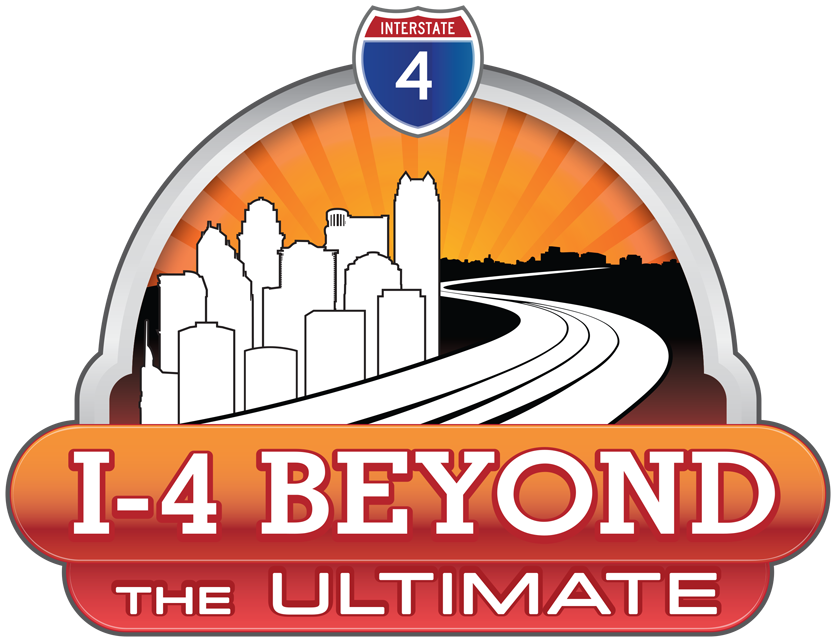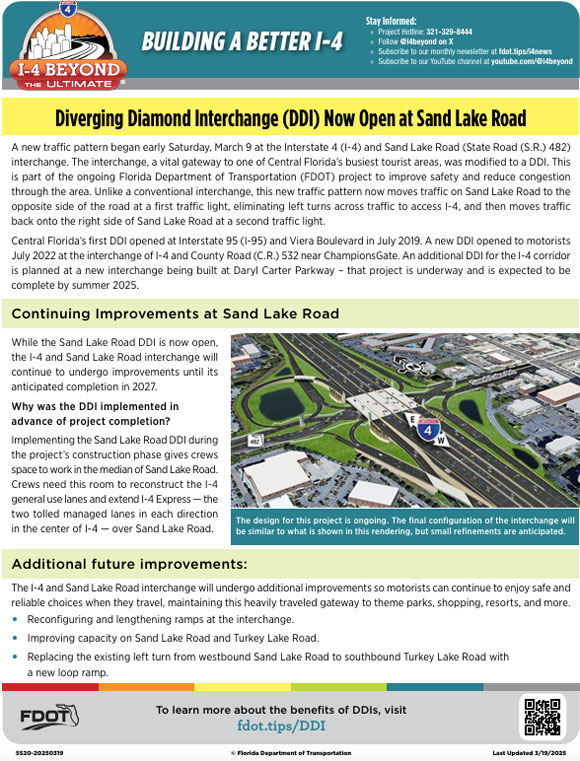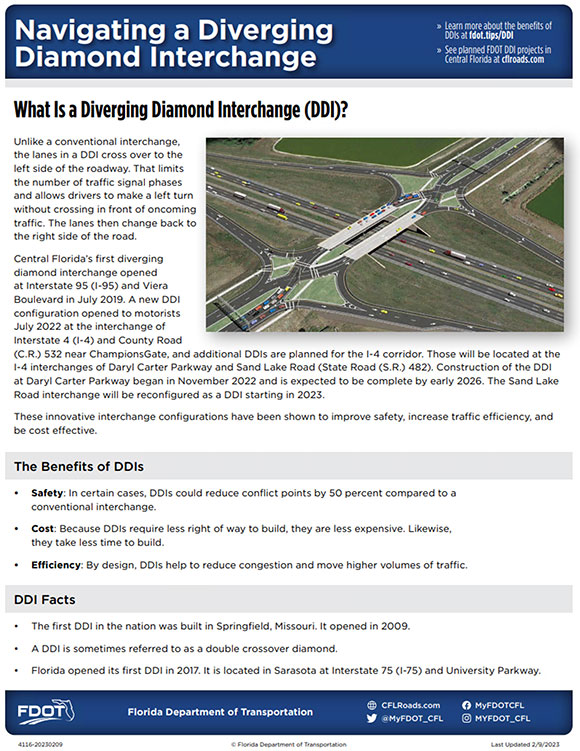The driver should proceed through the first traffic light, staying in the lane in which he or she is driving. The lane will guide the driver to the opposite side of the road. Before the lane crosses back to the right side of the road, the driver will encounter one more traffic signal.
If the driver wants to turn right onto a freeway ramp from the arterial road, the driver should use the right turn lane, just like in a conventional interchange.
When turning left onto a freeway ramp, the driver should stay in the left lane and follow the lane through the first traffic light on to the other side of the road. Then, before going through the second traffic light, the driver will turn left onto the freeway ramp.
Turning right onto the arterial road from a freeway ramp is as easy as taking a right turn at a conventional interchange. When turning right onto an arterial road, remember to yield to oncoming traffic and watch for pedestrians and bicyclists using marked walkways.
To turn left onto the arterial road, follow the left lane and, when traffic allows, take a left turn. The lanes will guide the driver from the left side of the road to the right side of the road, similar to going straight through the interchange.




Social Media